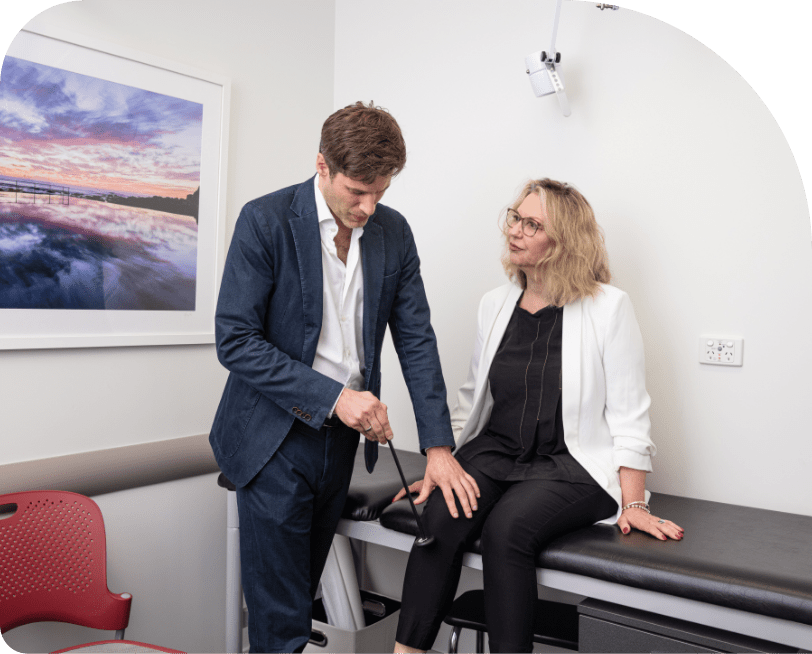Pain Neuromodulation

Pain
At Macquarie Neurosurgery & Spine, we have a tight collaboration with pain specialists to treat chronic pain, neuropathic pain, failed back surgery syndrome, complex facial pain, and other conditions.
We always look at the cause of pain (for example, a vessel compressing the trigeminal nerve can be surgically separated from the nerve itself in an operation of microvascular decompression, in order to treat trigeminal neuralgia that is not responding to medications), but in some circumstances, the source of pain cannot identified nor is it not possible to remove it, and neuromodulation is a treatment option.

Nerve Decompression And Tumours
Peripheral nerves can be compressed by ligaments, tendons, fibrosis, scars, etc. Over time, the nerve is affected, causing sensory problems (for example, sensation of pins and needles or electricity in the fingers, alterations or loss of sensation, pain), and/or motor deficits (not being able to move some muscles).
The most known condition is the carpal tunnel syndrome, in which the median nerve, innervating part of the hand, is compressed by the ligaments in the wrist. In such a condition, the release of tension of these ligaments causes a decompression of the nerve and a dramatic improvement of patient’s conditions.
At Macquarie Neurosurgery & Spine, we have experience to decompress all the peripheral nerves of the body, including, amongst other, the median nerve at the wrist (carpal tunnel syndrome), the ulnar nerve at the elbow (ulnar nerve entrapment) or at the wrist, the tibial nerve at the leg, the nerves of the brachial plexus, etc.

Neuromodulation
When all the conventional medical and/or surgical treatment to treat pain fail, neuromodulation is a valid option to reduce pain and improve patients’ quality of life. Neuromodulation alters nerve activity generally by using electrical stimulation, therefore modulating the pain circuitry and reducing the pain itself.
Electrical stimulators can be positioned directly on the nerves or its structures, on the spinal cord (epidural spinal cord stimulator) or directly on the brain (motor and/or somatosensory cortex stimulation).
In collaboration with pain specialists and neuro-physiologists, Macquarie Neurosurgery & Spine specialists can evaluate the condition and the best way to treat it in the most innovative and successful way.

Examples of the treated conditions are: persistence of back and leg pain after spine surgery, abdominal pain, arm pain, occipital, trigeminal and all the other kinds of neuralgia, complex facial/neck pain, etc. In some cases, an implant trial can help to establish patient’s response, before proceeding with the final implant.
At Macquarie Neurosurgery & Spine, such an operation is always performed by a neurosurgeon with expertise in pain treatment and an interventional pain specialist. This hybrid operation is aimed to increase the chance of success and reduce the rate of complications.
In the final implant operation, the electrode is charged by a battery that is positioned under the skin, generally in the flank or under the clavicle, like in a cardiac pacemaker.
In selected cases (for example, intractable complex facial pain), the electrode can be positioned directly on the brain. Macquarie Neurosurgery & Spine is one of the few clinical and research centres in Australia performing motor cortex stimulation, neuromodulation for pain cancellation in phantom-limb syndrome, and the first centre in the world that has introduced the use of combined brain motor and somatosensory stimulation for the treatment of very complex pain syndromes refractory to any other modalities.

